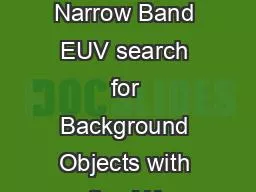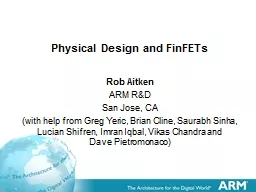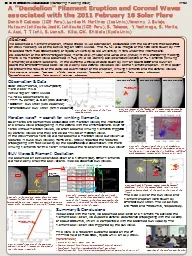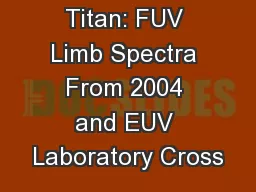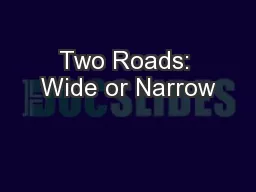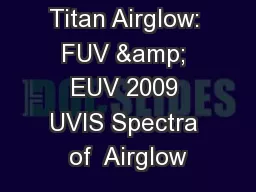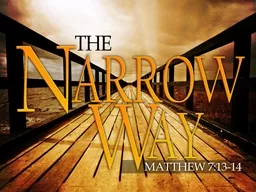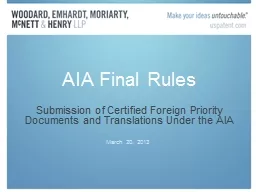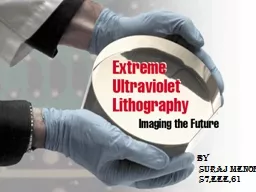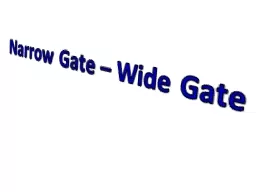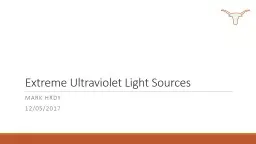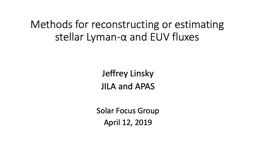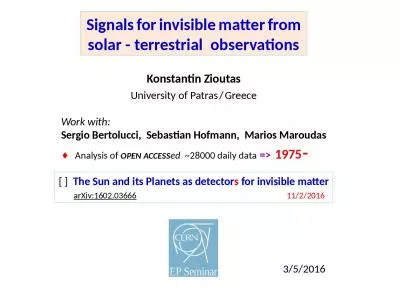PPT-Beyond the Limb A Narrow Band EUV search for Background Objects with the AIA
Author : friendma | Published Date : 2020-06-24
Sam Schonfeld Advisors Paola Testa and Steve Saar Contents Motivation Cross calibrating solar measurements Methods Finding Targets Tracking targets Modeling stellar
Presentation Embed Code
Download Presentation
Download Presentation The PPT/PDF document "Beyond the Limb A Narrow Band EUV search..." is the property of its rightful owner. Permission is granted to download and print the materials on this website for personal, non-commercial use only, and to display it on your personal computer provided you do not modify the materials and that you retain all copyright notices contained in the materials. By downloading content from our website, you accept the terms of this agreement.
Beyond the Limb A Narrow Band EUV search for Background Objects with the AIA: Transcript
Download Rules Of Document
"Beyond the Limb A Narrow Band EUV search for Background Objects with the AIA"The content belongs to its owner. You may download and print it for personal use, without modification, and keep all copyright notices. By downloading, you agree to these terms.
Related Documents

